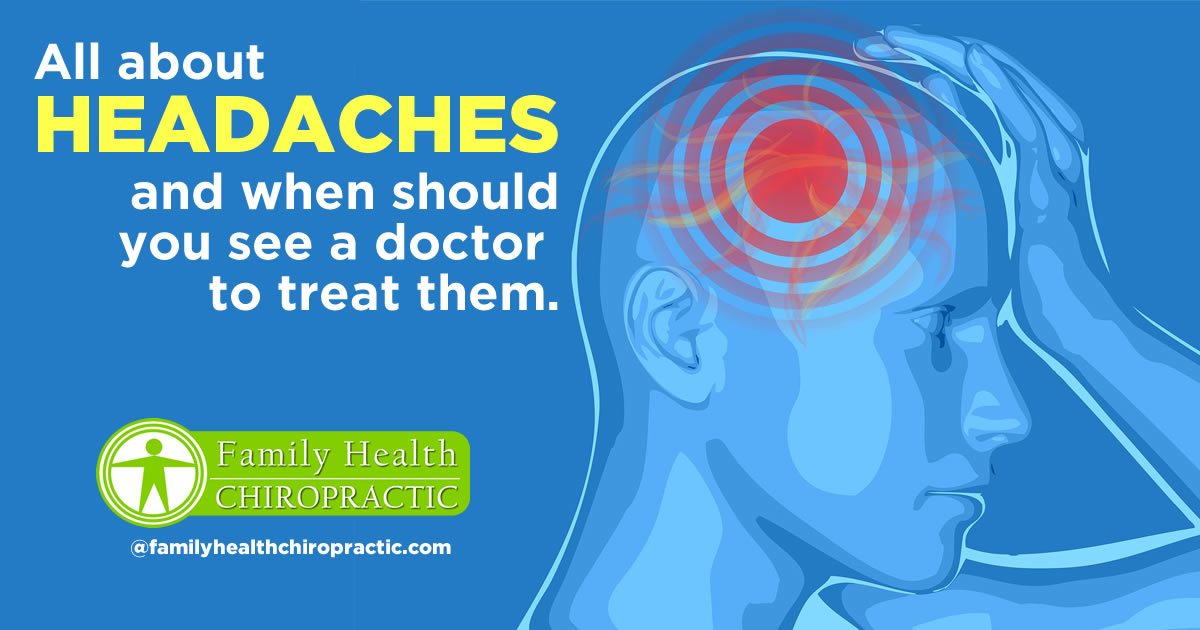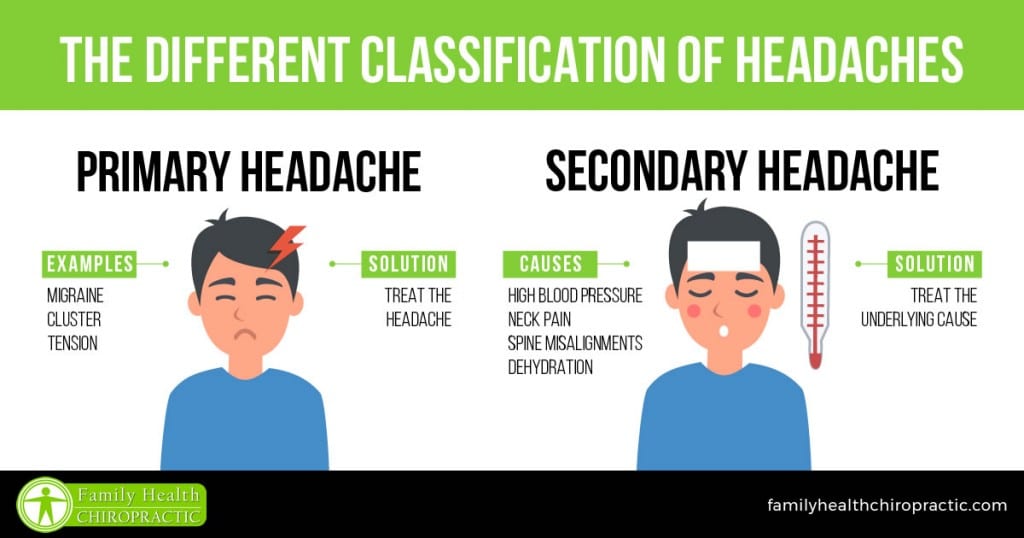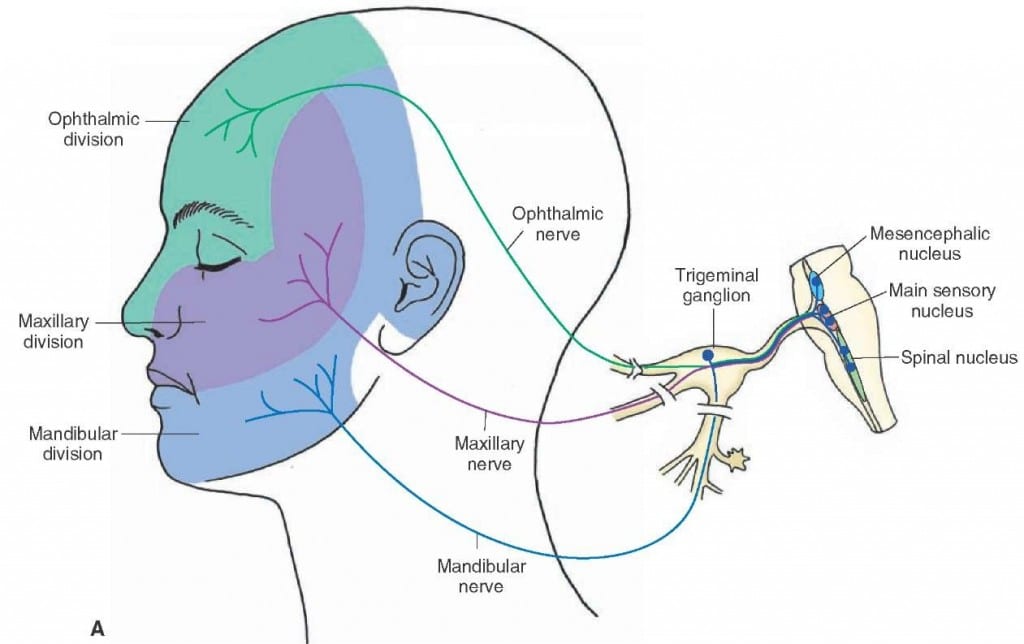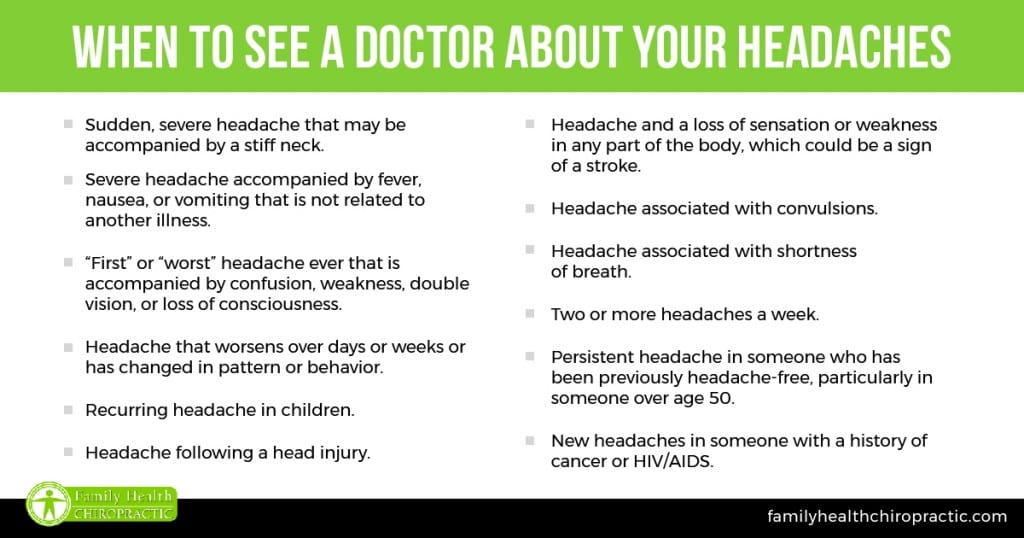You're Going About Your Day and Then BAM…
You've got a HEADACHE.
You suddenly feel like a tight, rubber band is squeezing your head so hard that it might pop!
Or maybe you have those periodic headaches… with nausea, sensitivity to light and sound.
Maybe it's not even in your head… but pain that is referred from your traps or shoulders or your neck that is causing all that pressure to build and build and it's making you go crazy.
Headaches are no joke and over 90% of the human population has experienced a headache in some form or fashion.
Nearly 2 out of 3 children will have a headache by the age of 15. Nine out of Ten adults will experience a headache in their lifetime. In fact, headaches are the most common form of pain experienced and a major reason behind employee absenteeism.
And although they are very common, When should you actually start to worry? Keep reading and I'll tell you.
The Different Classifications of Headaches
Primary Headaches
Primary headaches occur independently and are not caused by any other medical condition. And therein lies the problem with primary headaches- we have no freaking clue what causes them.
We just don't know what sets a primary headache in motion. What we do know is that a cascade of events trigger blood vessels and nerves inside and outside of your head alert the brain to start sending pain signals.
That's when the madness happens.
Brain chemicals called neurotransmitters generate what we perceive as head pain begin to spread.
Migraine, cluster, trigeminal and tension-type headaches are the most common types of primary headaches.
Secondary Headaches
Secondary headaches are headaches that are actually being caused by some other health disorder.
This can be related to anything that damages blood vessels or causes pain-sensitive nerve endings to be pressed on or pulled or pushed out of place.
Examples of health conditions that can cause secondary headaches could include fever, infection, overuse of medication, stress or emotional conflict, high blood pressure, psychiatric disorders, head injury or trauma, stroke, tumors, and nerve disorders.
Other Causes of Headaches
On top of primary and secondary headaches, there are other painful syndromes that can cause head and/or facial pain. These are headaches that cannot fit into any existing category and are of unknown cause.
Where Does the Pain of a Headache Come From?
It all really goes back to the brain and nervous system.
Your neck and head have sensors that relay information about touch, pain, temperature, and vibration to the brain via the trigeminal nerve.
This nerve is just one of 12 pairs of cranial nerves that start at the base of the brain. These 12 pairs of nerves are different than all the other nerves of your body in that they arise from the brain directly and not via the spinal cord.
The trigeminal nerve has three branches that conduct sensations from the scalp, the blood vessels inside and outside of the skull, the lining around the brain (the meninges), and the face, mouth, neck, ears, eyes, and throat.
VERY IMPORTANT ===> Brain tissue itself lacks pain-sensitive nerves and does not feel pain.
Headaches occur when specific “pain” nerve endings called nociceptors react to headache triggers (such as stress, certain foods, chemicals, odors, overuse of medications, etc.) and send messages through the trigeminal nerve to a part of the brain called the thalamus.
The thalamus acts as a “relay station” for pain sensation from all over the body. This includes neck pain, back pain, foot pain, etc.
The thalamus controls the body's sensitivity to light and noise and sends messages to parts of the brain that manage awareness of pain and emotional response to it. Other parts of the brain may also be part of the process, causing nausea, vomiting, diarrhea, trouble concentrating, and other neurological symptoms.
When to See a Doctor About Your Headaches
Certainly, not all headaches need to be treated medically.
In fact, you should always do a some reflection on what could be causing your headache and try to correct the problem yourself. Some of the most common causes include: lack of rest, hunger, dehydration, poor spine positioning or poor posture and medication overuse.
That said, it's important to note that headaches can be the symptoms of a more serious disorder or condition that does require immediate attention.
List of major symptoms that need attention:
- Sudden, severe headache that may be accompanied by a stiff neck.
- Severe headache accompanied by fever, nausea, or vomiting that is not related to another illness.
- “First” or “worst” headache ever that is accompanied by confusion, weakness, double vision, or loss of consciousness.
- Headache that worsens over days or weeks or has changed in pattern or behavior.
- Recurring headache in children.
- Headache following a head injury.
- Headache and a loss of sensation or weakness in any part of the body, which could be a sign of a stroke.
- Headache associated with convulsions.
- Headache associated with shortness of breath.
- Two or more headaches a week.
- Persistent headache in someone who has been previously headache-free, particularly in someone over age 50.
- New headaches in someone with a history of cancer or HIV/AIDS.
Final Thoughts
- Headaches can be classified as: Primary or Secondary Headaches.
- Primary Headaches include migraines, tension and cluster headaches.
- Secondary Headaches are those headaches causes by other health conditions including dehydration, high blood pressure, menstruation, hormone imbalances, etc.
- Treatments for primary headaches include treating the headache itself; whereas treatment for secondary headaches includes treating the cause (misalignment of the spine, high blood pressure, nutrient deficiencies, etc.)






